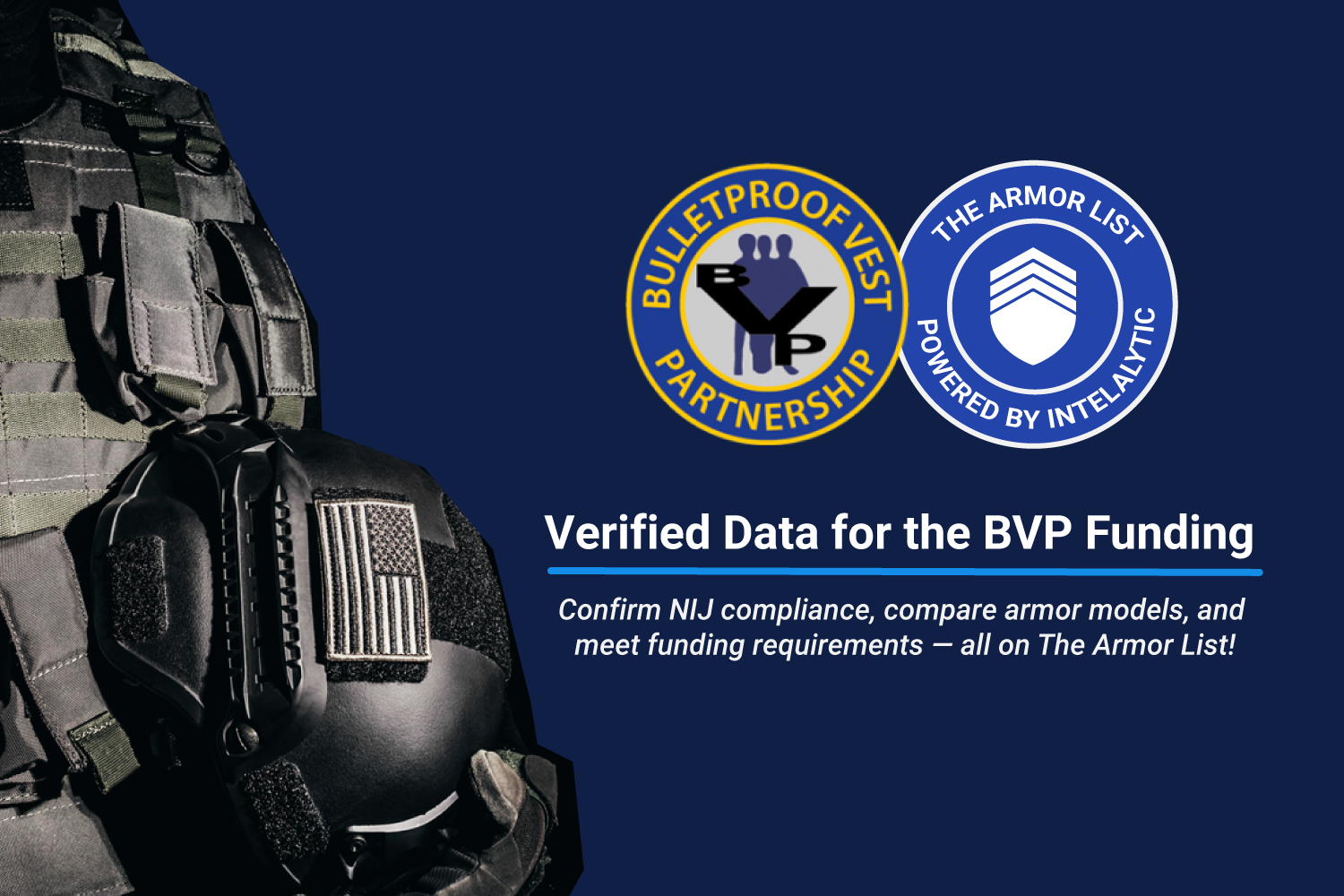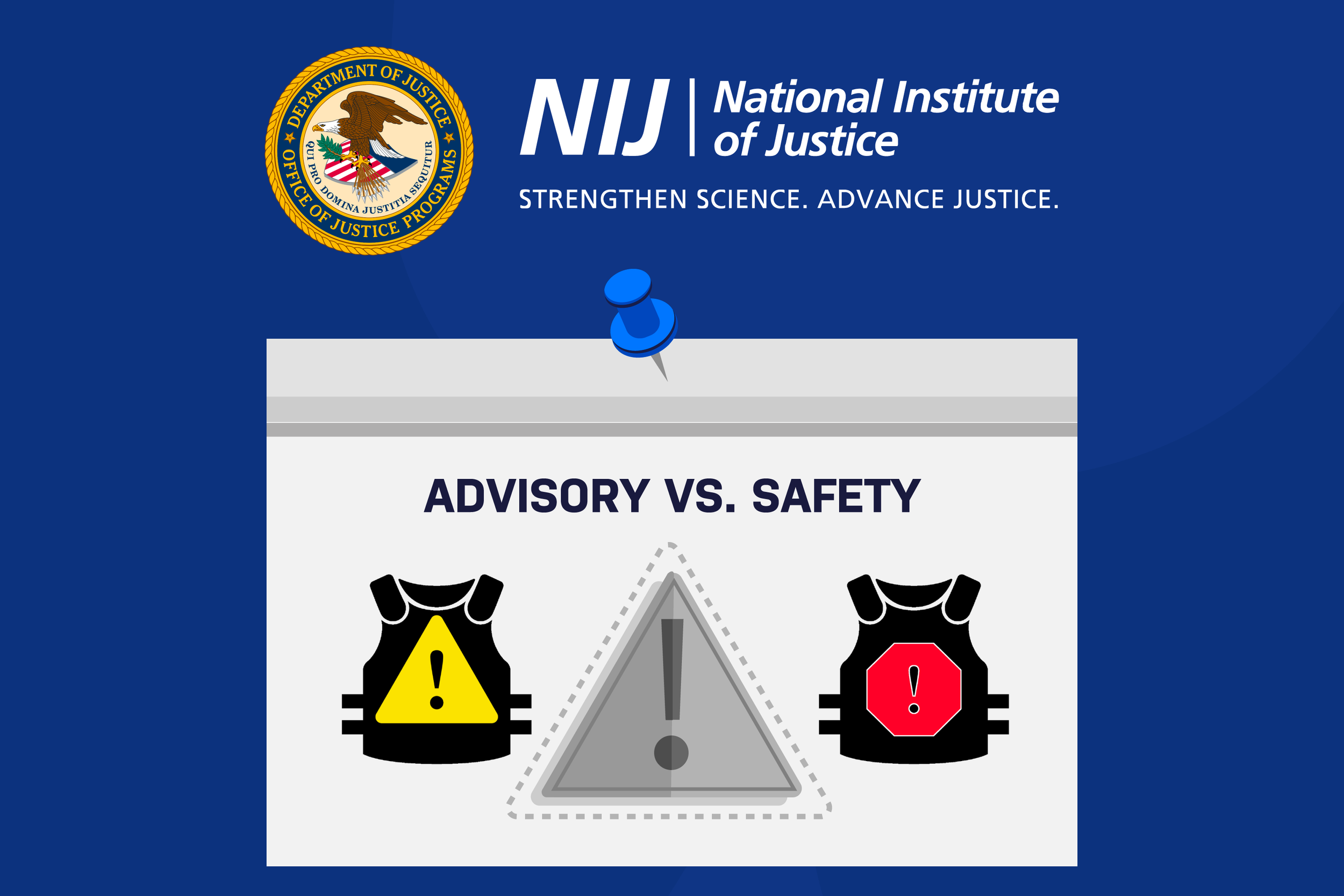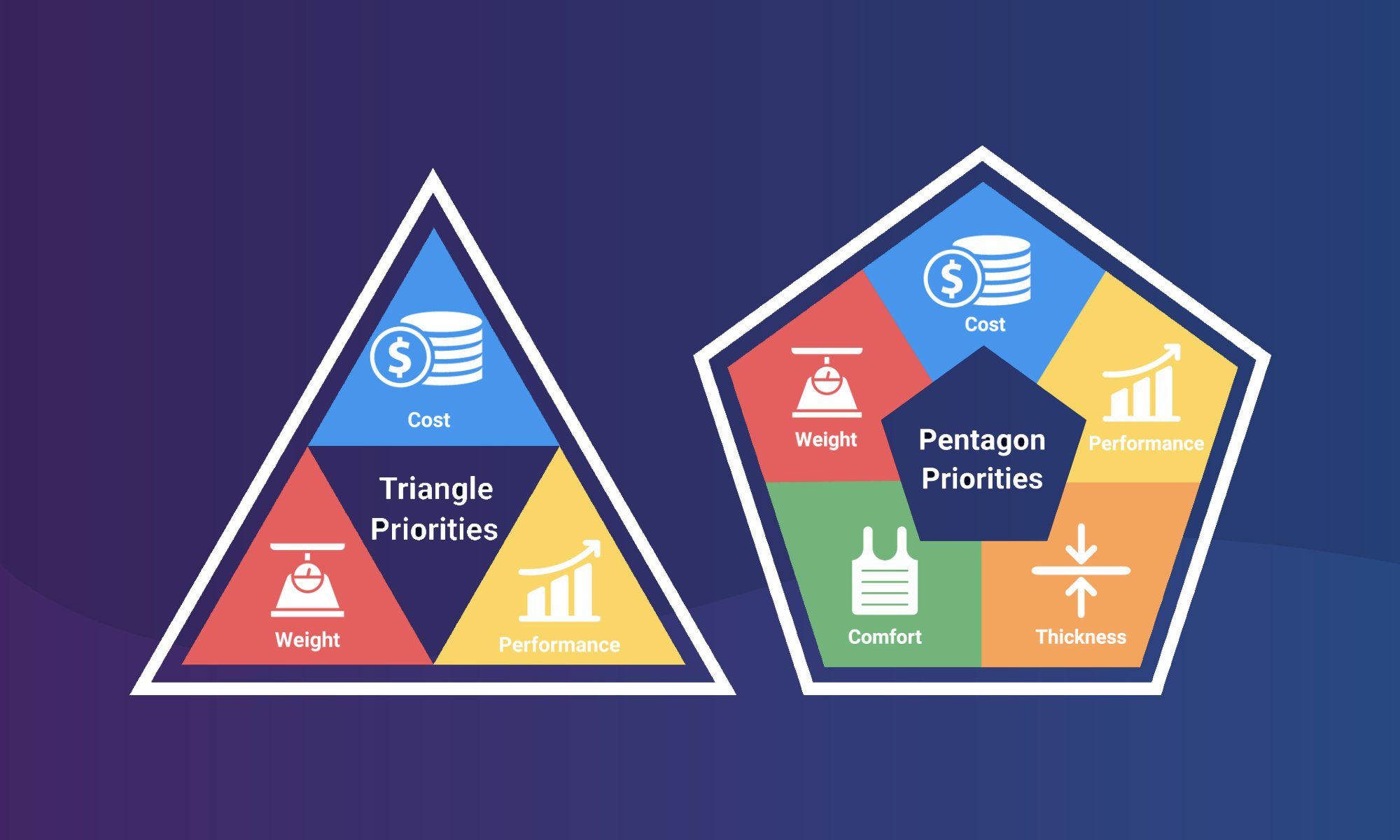
Understanding NIJ Soft Armor Panel Sizes: What C1 to C5 Really Mean for Buyers
Learn what NIJ C1–C5 soft armor templates really mean, how they map to consumer sizes, and why panel area drives compliance. Backed by IntelAlytic + The Armor List.
URL Slug: nij-soft-armor-panel-sizes-c1-to-c5-buyers-guide

The Patrick Leahy Bulletproof Vest Partnership: A Guide to Protecting Officers with IntelAlytic and The Armor List
For law enforcement agencies, officer protection isn’t optional — it’s mission critical. The Patrick Leahy Bulletproof Vest Partnership (BVP), administered by the U.S. Department of Justice, provides essential funding that helps departments nationwide purchase NIJ-compliant armor. Since 1999, more than 1.5 million vests have been reimbursed under this program, yet many agencies still face confusion over product eligibility, documentation, and compliance tracking. IntelAlytic and The Armor List simplify this process through verified NIJ data, educational resources, and procurement guidance that ensure every purchase aligns with national standards and audit-ready documentation.

NIJ Advisory Notice vs. NIJ Safety Notice: What They Mean for Body Armor (XR32 & ShotStop Explained)
When a body armor model drops off NIJ’s Compliant Products List, the impact is immediate—procurement stalls, grants are at risk, and agencies face tough decisions about fielded gear. This article breaks down the difference between Advisory and Safety Notices, how the process unfolds, and what recent cases like XR32 and ShotStop reveal about compliance, risk, and response.

How to Spot High-Quality Body Armor: A Buyer’s Checklist
Choosing body armor is a critical decision that directly impacts your safety in high-stakes situations. Whether you’re a professional or civilian, understanding what sets high-quality armor apart is essential. This comprehensive buyer’s checklist guides you through evaluating certifications, materials, threat compatibility, and manufacturer reputation. By avoiding common pitfalls and recognizing red flags, you can confidently invest in armor that provides reliable, life-saving protection.

Red Flags to Watch Out for When Purchasing Body Armor: A Guide for First Responders
First responders rely on body armor for crucial protection in high-risk scenarios, making it vital to ensure the highest safety and quality standards in procurement. This guide highlights potential red flags in purchasing body armor, including lack of NIJ certification, poor material quality, inadequate manufacturing standards, and questionable seller credibility. By understanding these red flags and following best practices such as verifying certifications, scrutinizing material details, ensuring adherence to manufacturing standards, and researching seller reputations, procurement officers can avoid substandard products and secure reliable protection for their personnel. Real-world case studies further underscore the importance of vigilance in body armor procurement.

The Essential Guide to NIJ's CJTEC Body Armor Management and CTP Clarifications
The article explores the National Institute of Justice's (NIJ) crucial role in managing body armor standards through its Compliance Testing Program (CTP) within the Criminal Justice Testing & Evaluation Consortium (CJTEC). It delves into the meticulous process of developing, testing, and certifying body armor to ensure it meets stringent safety and performance standards. Highlighting the significance of CTP clarifications, the article discusses how these administrative clarifications address ambiguities and ensure consistent application of standards. It also speculates on future clarifications and their potential focus areas, emphasizing the importance of a proactive and collaborative approach to maintain the efficacy of body armor standards.

2024 Guide to Global Ballistic Standards: Essential Insights for Body Armor
This article explores global ballistic standards crucial for designing body armor across military, law enforcement, and civilian sectors. Examining major standards such as NIJ, ASTM, UL, VPAM, TR, HOSDB, GOST, and GA141, we dissect their protection levels, addressable threats, and practical implications. Intended for manufacturers, policymakers, and end-users, this resource emphasizes the need for informed decision-making in adapting to evolving ballistic threats. Our analysis aims to enhance understanding of global standards shaping the safety and effectiveness of body armor in diverse environments.

The Evolution of Body Armor Design: Beyond the Triangle to a Pentagon of Priorities
For decades, the design and development of body armor have been dominated by a seemingly straightforward trade-off among three critical factors: weight, cost, and performance. This traditional view, often visualized as a triangle, has guided manufacturers in making decisions that balance these competing demands. However, the reality of body armor design is far more complex. Today, experts and manufacturers recognize that a successful protective platform is better represented by a pentagon that includes two additional, equally crucial factors: thickness and comfort. This article explores the five keys to a successful protective platform, revealing why it's time to move beyond the triangle to embrace a more nuanced and comprehensive approach.

NIJ Advisory Notices and NIJ Safety Notices to Law Enforcement and Corrections Agencies
The NIJ Compliance Testing Program (CTP) is vital for ensuring safety in law enforcement and corrections. Manufacturers voluntarily participate, demonstrating their commitment to quality. Advisory and Safety Notices play a crucial role, temporarily or immediately addressing concerns with body armor models. Understanding these notices is essential for manufacturers and end-users. Adherence to NIJ standards grants manufacturers a recognized mark of quality. The NIJ CTP's dynamic approach keeps standards current and effective in challenging environments. IntelAlytic supports adherence to compliance, prioritizing the long-term safety of body armor models and those who serve our communities.

Comprehensive Body Armor Care Guide: Proper Use, Maintenance, and Storage Techniques
This guide consolidates expert knowledge and industry best practices for maintaining body armor. Focused on soft armor, hard armor, ballistic helmets, and shields, it provides detailed instructions for ensuring their optimal performance and durability. Law enforcement officers are advised to conduct regular visual inspections of their body armor to check for any signs of damage, such as rips, excessive wear, or other forms of degradation.

Decoding the NIJ CPL: A Buyer's Guide to Navigating Body Armor Models & Manufacturers
In an era where personal safety takes precedence, the world of body armor emerges as an indispensable shield against evolving threats. Our comprehensive guide empowers you to distinguish genuine innovation from mere repackaging. Dive into a wealth of insights as we decode NIJ’s Compliant Product List, offering clarity on standards, transparency, and industry accountability.

